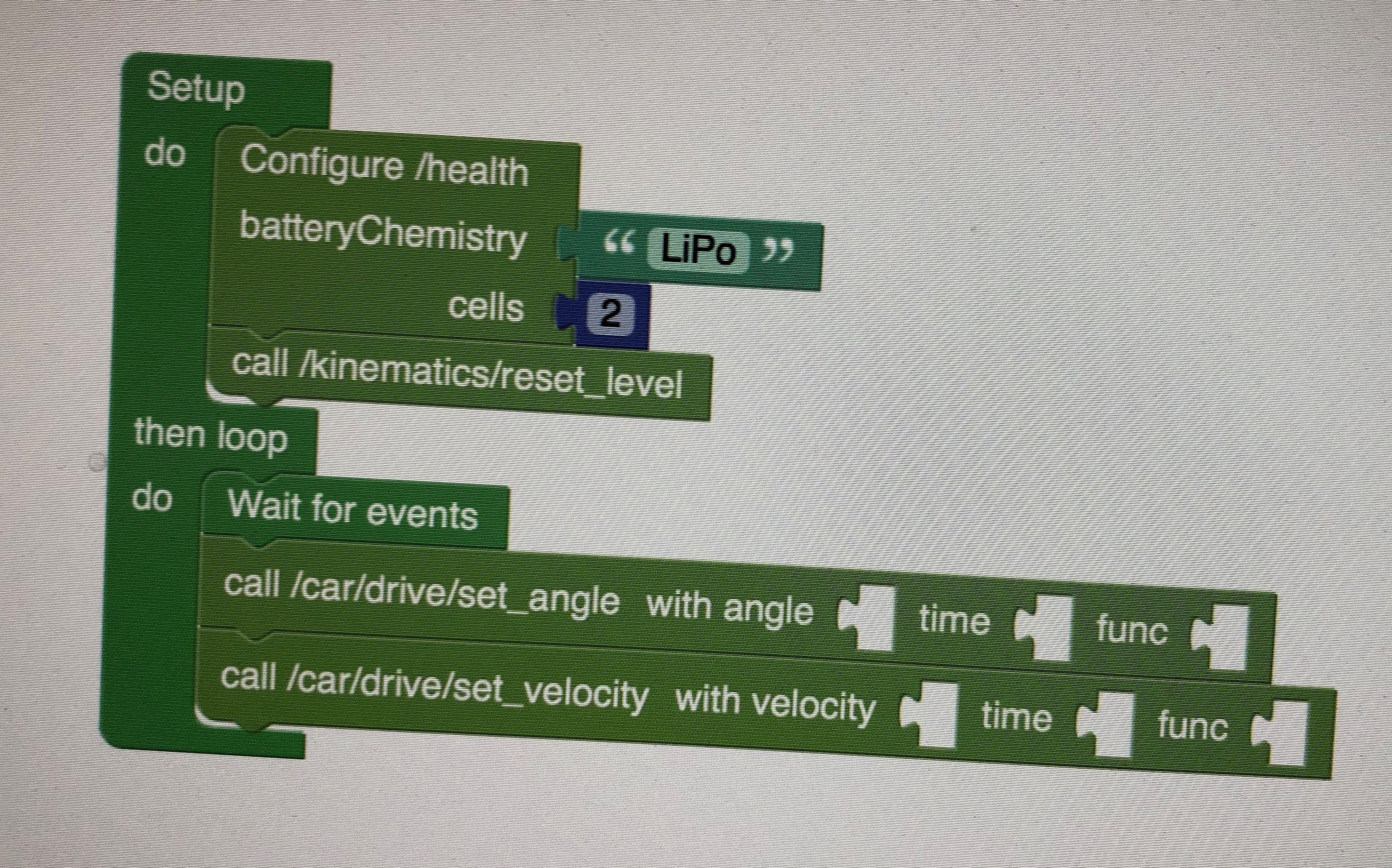I'm not the first person to look over my children's shoulders while they're playing with Scratch and go ... hmmm ... could I use that for hardware? In fact, rummaging around on the Internet I found a few projects (including http://kinoma.com/ and https://www.parallax.com) that take this approach.
For 8BitRobots, I'm trying to use Blockly in a similar way, but under the hood doing things a little different.

Blockly for 8BitRobots is reflective; that is, it uses the 8BitRobots API to determine what the underlying hardware can support, and then creates the blocks necessary to interact with it. This means that as the hardware changes or new nodes are added, the Blockly programming interface will reflect these new hardware abilities automatically.
The Blockly part of the software platform is very new and very immature (you've been warned). I'm still struggling with what programming model is powerful but easy to use especially when getting started. The current model, seen above, looks very Arduino-like in approach. First it sets up the devices, then it loops over a program forever. But the underlying infrastructure is event based (the hardware and software sends topic updates) so perhaps this isn't the best?
Expect many changes as this evolves.
 Tim Wilkinson
Tim Wilkinson
Discussions
Become a Hackaday.io Member
Create an account to leave a comment. Already have an account? Log In.